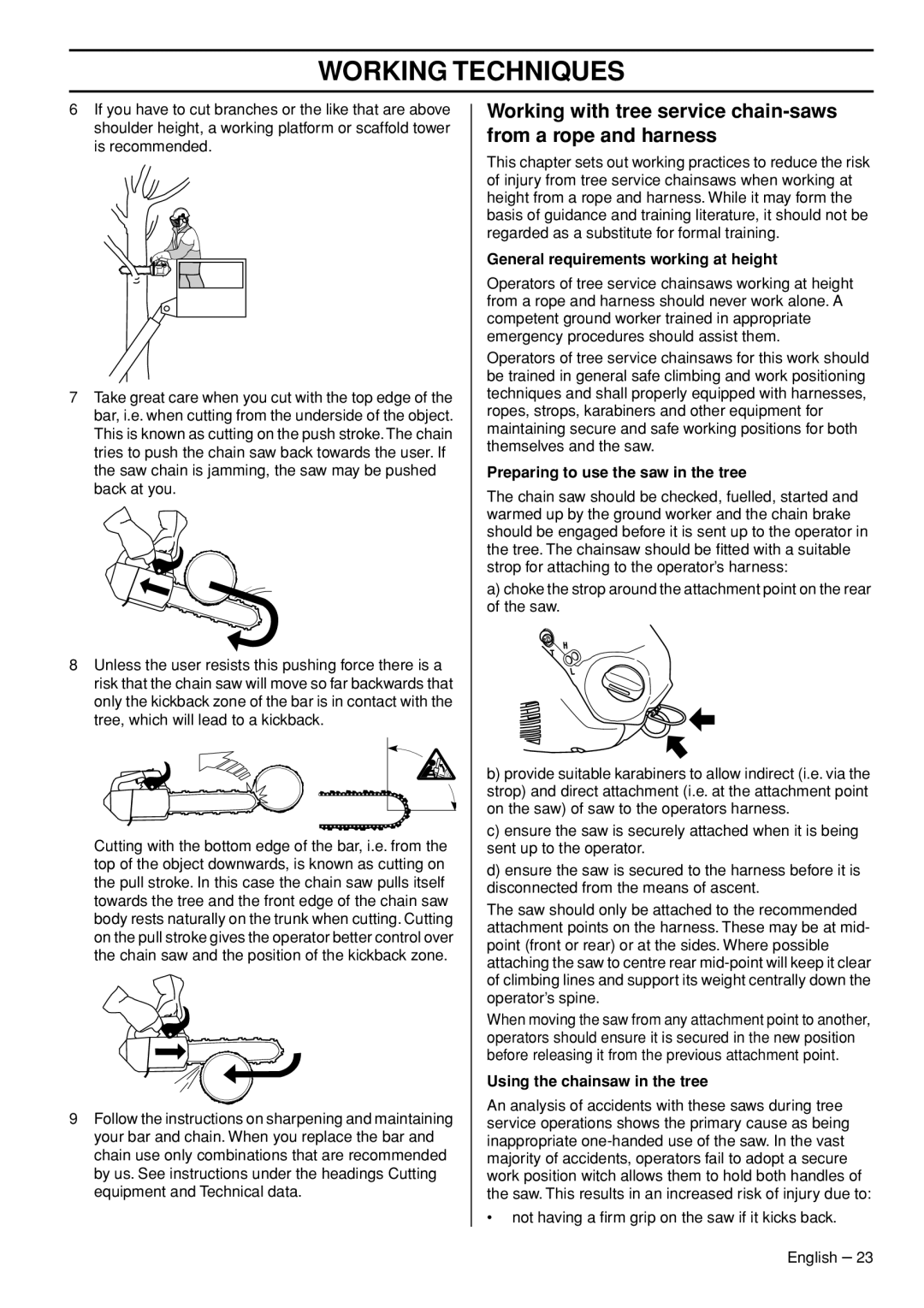
WORKING TECHNIQUES
6If you have to cut branches or the like that are above shoulder height, a working platform or scaffold tower is recommended.
7Take great care when you cut with the top edge of the bar, i.e. when cutting from the underside of the object. This is known as cutting on the push stroke. The chain tries to push the chain saw back towards the user. If the saw chain is jamming, the saw may be pushed back at you.
8Unless the user resists this pushing force there is a risk that the chain saw will move so far backwards that only the kickback zone of the bar is in contact with the tree, which will lead to a kickback.
Cutting with the bottom edge of the bar, i.e. from the top of the object downwards, is known as cutting on the pull stroke. In this case the chain saw pulls itself towards the tree and the front edge of the chain saw body rests naturally on the trunk when cutting. Cutting on the pull stroke gives the operator better control over the chain saw and the position of the kickback zone.
9Follow the instructions on sharpening and maintaining your bar and chain. When you replace the bar and chain use only combinations that are recommended by us. See instructions under the headings Cutting equipment and Technical data.
Working with tree service
This chapter sets out working practices to reduce the risk of injury from tree service chainsaws when working at height from a rope and harness. While it may form the basis of guidance and training literature, it should not be regarded as a substitute for formal training.
General requirements working at height
Operators of tree service chainsaws working at height from a rope and harness should never work alone. A competent ground worker trained in appropriate emergency procedures should assist them.
Operators of tree service chainsaws for this work should be trained in general safe climbing and work positioning techniques and shall properly equipped with harnesses, ropes, strops, karabiners and other equipment for maintaining secure and safe working positions for both themselves and the saw.
Preparing to use the saw in the tree
The chain saw should be checked, fuelled, started and warmed up by the ground worker and the chain brake should be engaged before it is sent up to the operator in the tree. The chainsaw should be fitted with a suitable strop for attaching to the operator’s harness:
a)choke the strop around the attachment point on the rear of the saw.
b)provide suitable karabiners to allow indirect (i.e. via the strop) and direct attachment (i.e. at the attachment point on the saw) of saw to the operators harness.
c)ensure the saw is securely attached when it is being sent up to the operator.
d)ensure the saw is secured to the harness before it is disconnected from the means of ascent.
The saw should only be attached to the recommended attachment points on the harness. These may be at mid- point (front or rear) or at the sides. Where possible attaching the saw to centre rear
When moving the saw from any attachment point to another, operators should ensure it is secured in the new position before releasing it from the previous attachment point.
Using the chainsaw in the tree
An analysis of accidents with these saws during tree service operations shows the primary cause as being inappropriate
•not having a firm grip on the saw if it kicks back. English – 23
